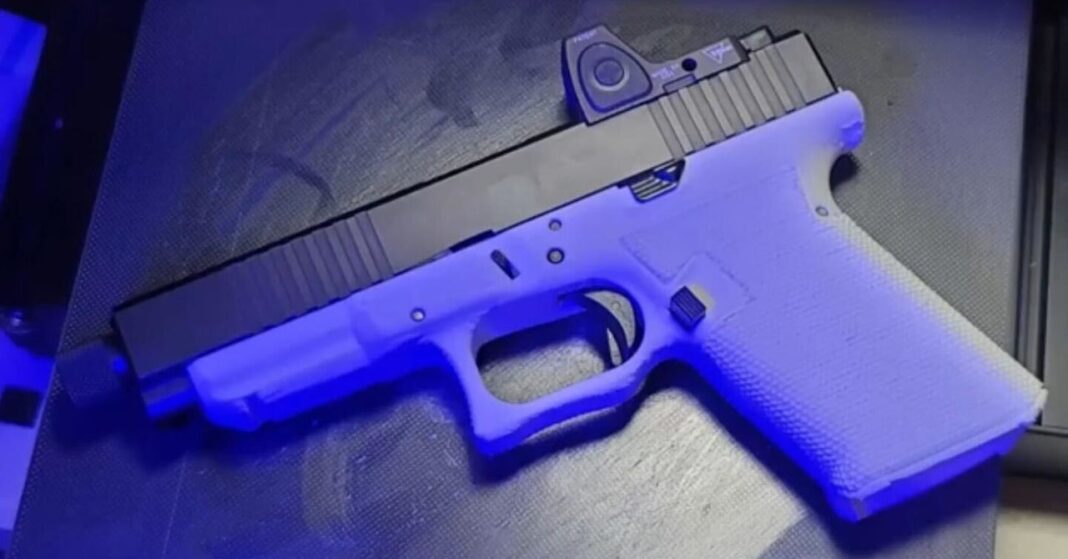3D-Printed Gun Used in High-Profile Murder Case: A Game-Changer in DIY Weapons Technology
In a shocking turn of events, a 3D-printed gun has emerged as a central piece of evidence in the murder case involving United Healthcare CEO Brian Thompson. The alleged killer, Luigi Mangione, was found with a homemade plastic weapon that has sent ripples through the DIY gunsmithing community and law enforcement alike. This incident underscores the evolving landscape of printable firearms and the potential dangers they pose in the wrong hands.
The Story So Far
More than a decade since the inception of 3D-printed guns, the arrest of Luigi Mangione has brought the issue to the forefront once again. The gun in question, a Chairmanwon V1 model based on the FMDA 19.2 design, has sparked discussions about the capabilities and risks associated with these untraceable weapons. As authorities delve into the details of the case, the implications of such technology on public safety and law enforcement strategies become more pronounced.
The Evolution of 3D-Printed Firearms
The FMDA 19.2 design, although not the latest in 3D-printed gun technology, has proven to be a reliable and functional model over the years. With the addition of unique features like the Chairmanwon V1 grip texture, these weapons have become increasingly sophisticated and deadly. Despite advancements in conventional firearm manufacturing, the allure of DIY firearms continues to attract enthusiasts and, unfortunately, individuals with harmful intentions.
A Deep Dive into the Case
Authorities have linked Mangione to the murder of Brian Thompson, citing a handwritten manifesto found in his possession that criticizes the healthcare industry and United Healthcare in particular. The use of a 3D-printed gun in such a high-profile crime highlights the accessibility and potential consequences of these homemade weapons. As the investigation unfolds, questions arise about the regulatory gaps that allow individuals to acquire and use such firearms with ease.
The Impact of DIY Weapons Tech
Cody Wilson, the founder of Defense Distributed, emphasizes the durability and functionality of modern 3D-printed firearms like the FMDA 19.2. The ability of these weapons to withstand repeated use without structural failures raises concerns about their proliferation and misuse. The case involving Mangione serves as a stark reminder of the dangers posed by homemade guns and the urgent need for comprehensive regulations to address this growing threat.
Conclusion
The discovery of a 3D-printed gun in a high-profile murder case underscores the evolving nature of weapons technology and its implications for public safety. As law enforcement agencies grapple with the challenges posed by DIY firearms, it becomes imperative to address the regulatory loopholes that allow individuals to manufacture and possess untraceable weapons. The case of Luigi Mangione serves as a wake-up call to the authorities and the public alike, urging them to take proactive steps to prevent similar incidents in the future.
Frequently Asked Questions
1. What is the significance of the Chairmanwon V1 3D-printed gun model?
The Chairmanwon V1 is a modified version of the popular FMDA 19.2 design, known for its reliability and functionality in the DIY gunsmithing community.
2. How did authorities link Luigi Mangione to the murder of Brian Thompson?
Authorities found a handwritten manifesto on Mangione that criticized United Healthcare and the healthcare industry, along with ballistic evidence linking him to the crime scene.
3. What are the implications of using a 3D-printed gun in a high-profile murder case?
The case highlights the dangers of untraceable homemade firearms and underscores the need for stricter regulations to prevent their misuse.
4. How has DIY weapons technology evolved over the years?
DIY firearms like the FMDA 19.2 have become more sophisticated and lethal, posing a significant challenge to law enforcement agencies worldwide.
5. What role does Cody Wilson play in the discussion on 3D-printed guns?
Cody Wilson, the founder of Defense Distributed, emphasizes the durability and practicality of modern 3D-printed firearm models like the FMDA 19.2.
6. What steps can be taken to address the risks associated with 3D-printed guns?
Regulatory measures, public awareness campaigns, and enhanced law enforcement strategies are crucial in mitigating the dangers posed by DIY firearms.
7. How does the Mangione case impact the public perception of 3D-printed guns?
The case sheds light on the potential misuse of printable firearms and underscores the need for vigilance in monitoring and regulating their production and distribution.
8. What lessons can be learned from the Mangione case?
The incident serves as a cautionary tale about the dangers of unregulated firearms manufacturing and the urgent need for legislative action to curb their proliferation.
9. Are there any precedents for using 3D-printed guns in criminal activities?
While rare, cases involving 3D-printed firearms have been reported globally, prompting concerns about the accessibility and misuse of such weapons.
10. How can individuals contribute to preventing incidents involving 3D-printed guns?
By advocating for stricter gun control measures, supporting law enforcement efforts, and promoting responsible firearm ownership, individuals can help mitigate the risks associated with 3D-printed weapons.
Tags: 3D-printed guns, DIY firearms, Luigi Mangione, FMDA 19.2, Chairmanwon V1, Cody Wilson

